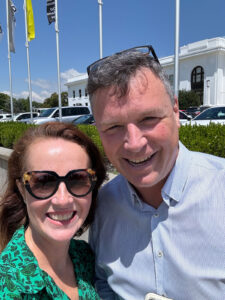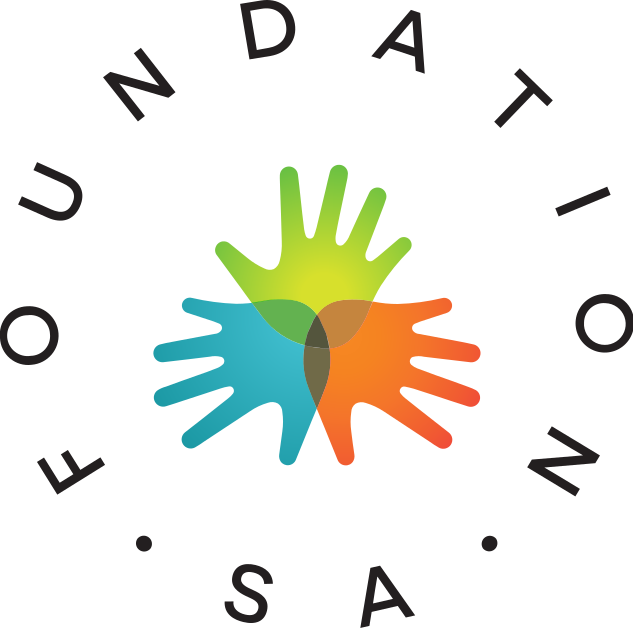Your security is important to us – this website and your personal data is securely encrypted. Please see our Privacy Statement
 Community foundations have a unique superpower in the world of philanthropy: they exist to make giving easy.
Community foundations have a unique superpower in the world of philanthropy: they exist to make giving easy.
Powered by a group of donors with a connection to place, a community foundation like Foundation SA, provides the structure, support and philanthropic expertise that enables everyday Australians to give with real impact.
The Federal Government’s Productivity Commission (PC) is currently undertaking a review to understand trends in philanthropic giving and identify opportunities and obstacles to increasing giving. It’s been hailed as a ‘once-in-a-generation’ review, with the ultimate aim of doubling philanthropic giving in Australia by 2030.
It’s a lofty goal, but it’s also an exciting opportunity to raise the visibility of Australia’s 45 community foundations which are often described as ‘hidden gems’ that few people know about. If we’re serious about growing giving in Australia, that needs to change.
I was recently invited by the peak body, Community Foundations Australia, to address the Commissioners in Canberra at one of their public hearings. As the Commissioners did not travel to Adelaide, we wanted to make sure they heard a South Australian perspective.
I shared the story of the SA Disaster Recovery Fund which was opened by Foundation SA in response to the floods along the River Murray in late 2022. In a short amount of time, the Disaster Recovery Fund raised $87,000 from Foundation SA sub-fund holders, private foundations and the general public. This was distributed in nine grants to non-profit organisations working directly with flood-impacted communities.
The point of sharing this story with the Commissioners was to help them understand that the role of community foundations is to listen to community, to use our connections to rally resources and deploy them wherever the community identifies the need. Particularly in times of crisis or disaster response, more often than not, the best outcomes are achieved when local knowledge leads. There are hundreds of examples of the success of community-led models here in Australia and all over the globe.
The PC review is happening alongside a review into the tax-deductible status of community foundations. 2024 might be the year community foundations are granted DGR 1 status which would greatly expand their ability to direct funding to grassroots community organisations across Australia. It would be a game changer.
With the Productivity Commission releasing its draft report late last year and the public hearings now concluded, the final report is due to be distributed in May.
Though Foundation SA is not quite three years old, I’m excited that we were invited to share our story in Canberra, and I’m thrilled to see renewed attention being given to place-based giving. One of Foundation SA’s key goals is growing giving in South Australia so you could say I have a vested interest in the outcomes of the Productivity Commission and the DGR1 review.
And yet, I admit that I’m not awaiting the final report with bated breath.
That’s because, regardless of the PC’s findings, community foundations will continue to be a trusted voice for communities, working each day to empower their communities to thrive.
Our place-based focus coupled with the current intergenerational transfer of wealth we’re already seeing in our donor communities, is already positively impacting the national agenda to double-giving, with or without the Productivity Commission’s findings.
To see how Foundation SA is growing giving in our own backyard, read the inspiring stories from our Neighbourhood Grants in 2023 and 2022 and get involved by contacting us here.
— Sophie Doyle, Philanthropy and Engagement Manager
Photo — Sophie Doyle with Ian Bird, Chief Executive Officer, Community Foundations Australia

Contact us
- www.foundationsa.org.au

- hello@foundationsa.org.au

- +61 8 8223 3597


Australian Communities Foundation (ACF) is Foundation SA’s implementation partner and Trustee of funds under management.
Main Fund (tax deductible) ABN 57 967 620 066
Extension Fund (non-tax deductible) ABN 57 485 460 977
Scholarship Fund (tax deductible) ABN 82 218 603 765.

We pay our respects to the Traditional Custodians of the Adelaide region on which our office stands, the Kaurna people. We acknowledge all First Nations peoples and their deep connection to the land. The dispossession and treatment that has occurred, still impacts on the lives of Aboriginal and Torres Strait Islander people today. We walk hand-in-hand with all First Nations peoples on the path to reconciliation.

